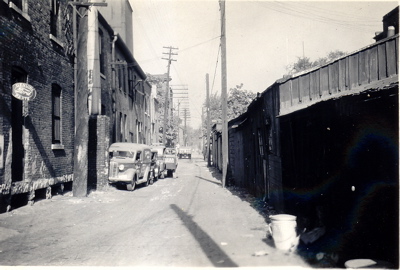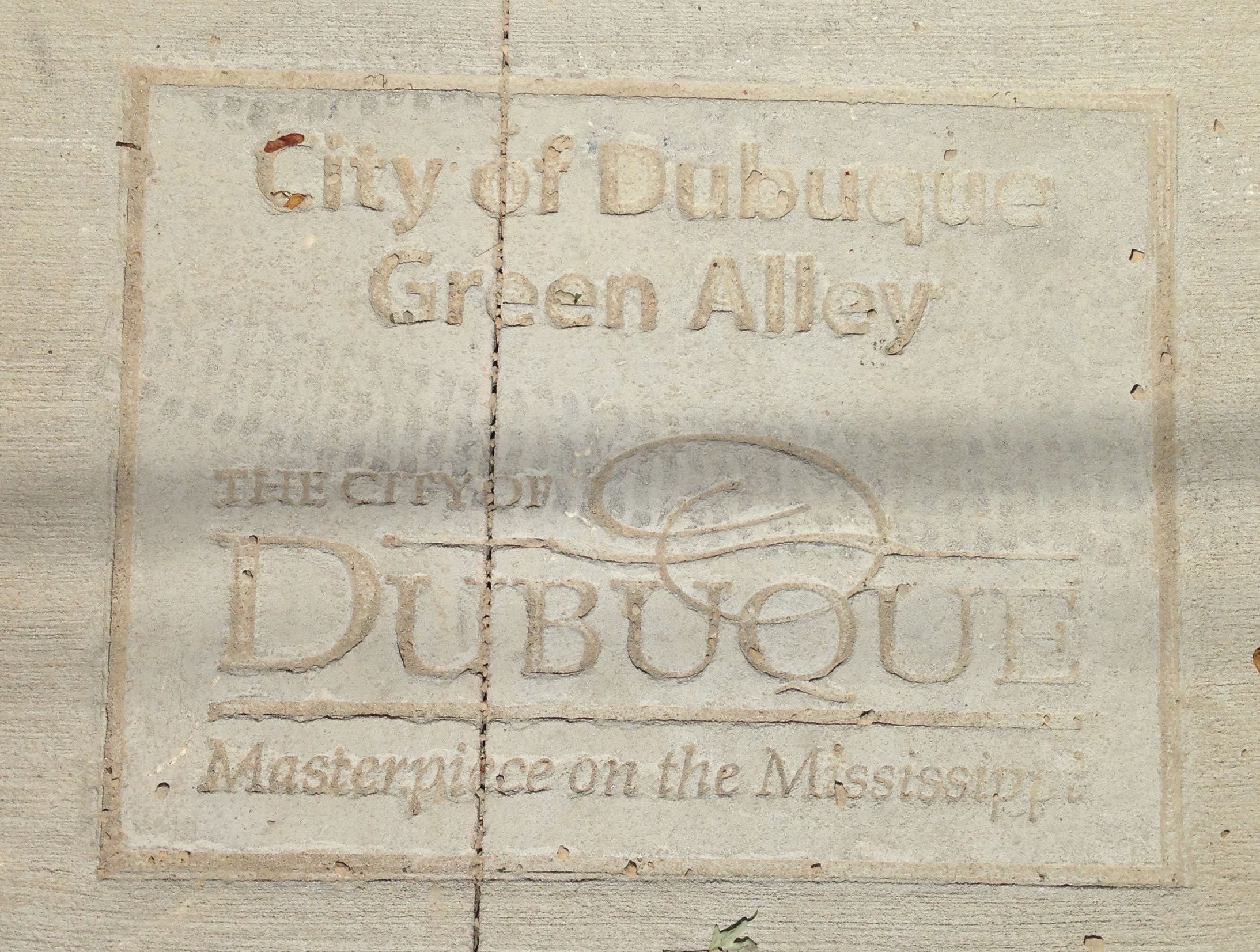Encyclopedia Dubuque
"Encyclopedia Dubuque is the online authority for all things Dubuque, written by the people who know the city best.”
Marshall Cohen—researcher and producer, CNN
Affiliated with the Local History Network of the State Historical Society of Iowa, and the Iowa Museum Association.
ALLEYS
ALLEYS. An alley or alleyway is a narrow, pedestrian lane found in urban areas which usually runs between or behind buildings. Alleys may be paved or simply dirt tracks. A blind alley with no outlet at one end is a cul-de-sac.
In the United States alleys exist for both service purposes and automobile access in both older commercial and residential areas. In residential areas, primarily those built before 1950, alleys provide rear access to property where a garage was located, or where waste could be collected by service vehicles. A benefit of this was the location of these activities to the rear, less public side of a dwelling. By 1950 they had largely disappeared from development plans for new homes. Chicago, Illinois has about 1,900 miles of alleyways making it the largest network of alleyways in the world.
In 1903 businessmen and merchants in the business district of Dubuque began considering the advantages of having incandescent lights placed in alleys running behind their properties. The plan was to wire the alleys on both sides of Main Street from Second to Eleventh street. Three lamps of "16 candle power" each would be placed in every block. This, it was felt, would give enough light to policemen to see what was happening. Police had argued that due to the large boxes stacked in the alleys and the darkness that it was impossible to see.
In 2015 Dubuque had approximately 300 alleys. (1) All alleys and other impervious surfaces contributed to the flooding problems throughout the watershed. Storm water during major rain events exceeded the capacity of the storm sewer system. (2)
Studies conducted on the ability of permeable pavement systems to reduce runoff indicated that alley pavers had the capability to infiltrate up to 100 inches per hour when newly installed. The permeable pavement were expected to provide up to 80% reduction in runoff from the alleys, based on studies from the Environmental Protection Agency. The City stated it would provide for regular alley sweeping and vacuuming in order to maintain the permeable nature of the pavers. The City would replace loose or broken pavers if they should occur. (3)
Pavers were used instead of permeable asphalt or concrete. From a surface life cycle standpoint, they were more cost-effective option over the long term. Another benefit of the pavers was that the alley surface can be “un-zippered” and replaced if, after the alley is reconstructed, an underground utility repair needed to be completed. This saved on repair costs. (4)
The pavers were initially expected to settle about a half inch. They were installed with this initial settlement in mind. Additional settling or shifting was expected to be minimal because concrete collars or bands were installed along the edge of the alley to hold the pavers in place, and because of the significant amount of clean stone aggregate underneath the pavers. (5)
Alleys that did not contain water and sewer utilities required about a month to reconstruct, depending upon weather. Alleys that contained sewer and water utilities took a month and a half to two months to reconstruct. (6)
---
Source:
1. City of Dubuque. Online: www.cleanwateriowa.org/...id=30&City of Dubuque, Iowa
2. City of Dubuque. Online: http://www.cityofdubuque.org/1886/FAQs
3. Ibid.
4. Ibid.
5. Ibid.





